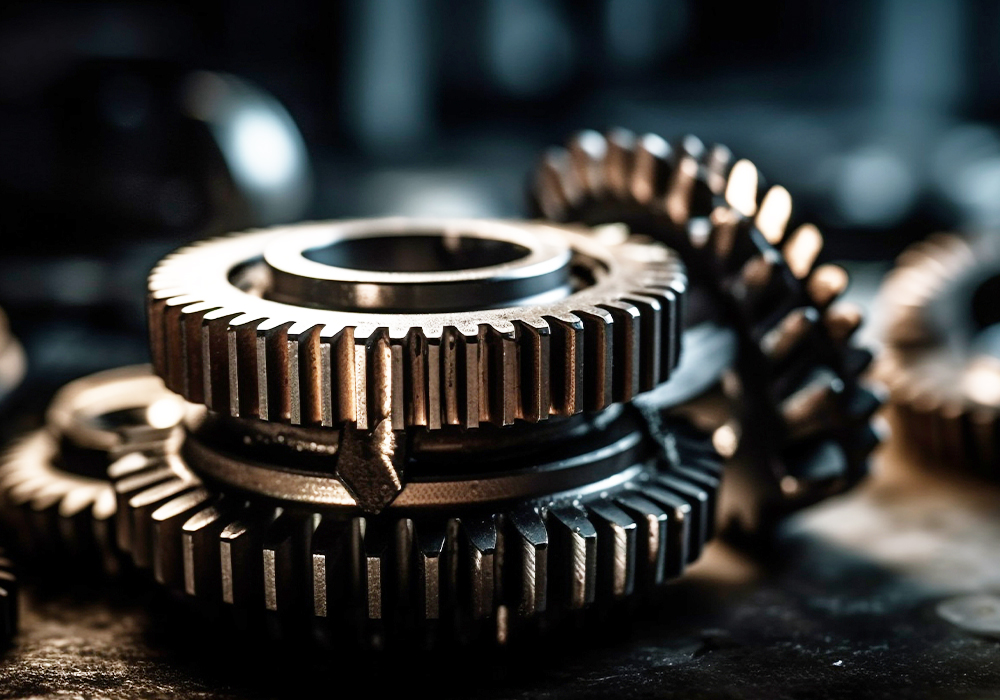
The world of manufacturing is constantly evolving, and one of the most groundbreaking innovations in recent years has been 3D printing. This technology, initially hailed for its ability to create small plastic trinkets, has now turned into a game-changer for various industries, including the gear industry. 3D printing in gear manufacturing has opened up new avenues for design, production, and performance.
In this article, we’ll explore the latest developments in 3D printing within the gear industry and how it’s reshaping the way we think about gears.
One of the most significant advantages of 3D printing in the gear industry is the ability to create highly customized and complex gear designs. Traditional gear manufacturing methods often involve multiple steps, including machining and assembly, which can be time-consuming and costly. With 3D printing, intricate and bespoke gear designs can be produced in a single step, reducing production time and costs.
The ability to create complex internal geometries and optimize gear tooth profiles allows for enhanced performance. Gear designers can now experiment with innovative designs that were previously impossible to produce using conventional methods.
This level of customization is a game-changer for industries where performance and efficiency are paramount.
Initially, 3D printing in the gear industry was limited to plastics and lower-strength materials. However, advancements in materials science and additive manufacturing techniques have expanded the range of materials available for 3D-printed gears. Today, engineers can choose from a wide array of metals, polymers, and composites, allowing them to tailor the material properties to the specific requirements of the application.
Metals like titanium, stainless steel, and aluminium can now be 3D printed with exceptional precision, providing gears with high strength and durability. This innovation has opened doors for the gear industry to be utilized in critical applications like aerospace and automotive, where gears must withstand extreme conditions.
Traditionally, the gear design process could be time-consuming, with numerous iterations required to fine-tune the final product. 3D printing has significantly shortened the prototyping phase, allowing engineers to quickly test and refine gear designs.
This rapid prototyping capability reduces lead times and accelerates the product development cycle, giving manufacturers a competitive edge in the market.
3D printing is inherently more sustainable than traditional manufacturing methods. It generates less waste and allows for more efficient use of materials. With 3D printing, manufacturers can produce gears with minimal material wastage, making it a cost-effective and environmentally friendly solution.
This not only benefits the bottom line but also contributes to a more sustainable future for the gear industry.
While 3D printing has brought about numerous benefits to the gear industry, it is not without its challenges. Post-processing steps, such as heat treatment and surface finishing, are often required to meet the desired quality and performance standards.
Additionally, the initial investment in 3D printing equipment and expertise can be substantial.
Looking ahead, the gear industry is likely to see further advancements in 3D printing technology, including improved materials, faster printing speeds, and more reliable processes.
As the technology matures, it is poised to become an integral part of gear manufacturing, offering unparalleled flexibility and efficiency.
3D printing is transforming the gear industry in unprecedented ways. Customization, material innovation, rapid prototyping, reduced waste, and cost savings are just some of the benefits it brings to the table. With ongoing developments in 3D printing technology, the future of the gear industry looks promising, as it continues to evolve and adapt to the changing landscape of modern manufacturing. As we move forward, the sky’s the limit for the potential applications of 3D-printed gears in various industries, opening up new horizons for innovation and performance.